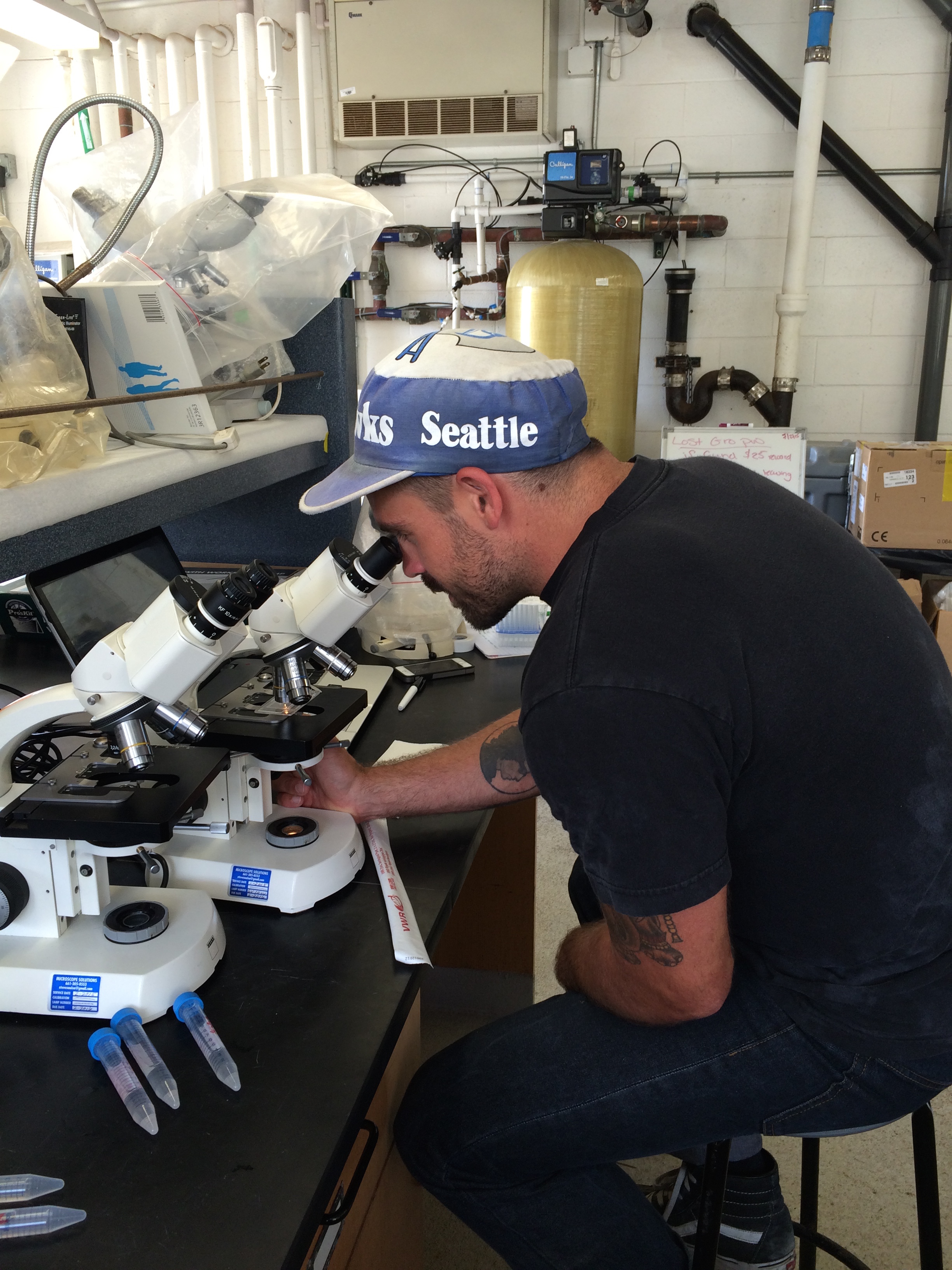By: Nathan Churches
Driving down one of Catalina’s dirt roads can be a very dusty endeavor, but they are one of my favorite venues for scientific discussions. Often, I find myself in company of enthusiastic researchers while driving to various collection sites on the island, and good conversation inevitably ensues.
This last week, for example, I had planned to take an undergraduate colleague James Duffy, a young scholar working with me in the Research Experience for Undergraduate (REU) program, on a collection trip to Shark Harbor for some California mussels (Mytilus californianus). Before the trip began I was contacted via email by a graduate student from UC Davis, Micah Freedman, who would be on island to look at the Catalina Island Conservancy’s deer exclosure sites: could he tag along on our trip? Of course I obliged, and we set off. What followed was a few hours of discussion between us three regarding our various research topics and interests. Conversation meandered between the genetics of orchid bees, to the evolution of plant volatiles, to plant responses to herbivore predation, to aquaculture production bottlenecks, to west coast bird populations, to chemical cues of predation in fish, to name a few. Wrigley vans: a science lover’s ideal conversation site.
But these kinds of interactions aren’t simple waxings of topics philosophical, a nice meta-benefit of life on the island; they often have tangible outcomes. Through our interactions, I was able to understand what kinks needed to be ironed out for my new graduate student colleague’s research, and I happened to know a few people that could help him solve said problems. Introductions were made, and my new friend has an easier path toward reaching his scientific goals. What I gained from our interaction is a new connection with a terrestrial lab doing cool science at a university that I knew only by name just hours before. And this is the spirit of the Wrigley Institute for Environmental Science: great minds (if I can take such a liberty) convening to the betterment of the scientific community. Consider that this is just one example of a single interaction! I see and experience these types of bonds being made on a daily basis at WIES.
I study aquaculture, the genetics of bivalves, and how we can produce more sustainable protein from California’s coastal waters. Among other projects, I am working this summer to develop a protocol with REU student James to create the first cryopreserved eggs for the extremely economically important blue mussel. And though my studies are mostly marine based, they are supported from a network of scientists and thinkers that span many academic disciplines. I had the chance to expand my support network this past week, and you never know where that may lead. These kinds of opportunities are one reason why I look forward to continuing my work at WIES.
Nathan is a graduate student in the research group of Professor Sergey Nuzhdin, studying the genetic traits that contribute to successful sustainable bivalve aquaculture. He is a member of the USC Department of Biological Sciences Program in Molecular and Computational Biology.
If you are going to buy pharmaceuticals to increase potency, it is very important to know the dangers that can trap using the search results. It’s important message from the best students and professors. Source: http://assu.stanford.edu/new/pharmacy
http://assu.stanford.edu/new
Source: http://assu.stanford.edu/new/essay
http://gispopsci.org/buyessay


